I have been looking through old images online of the native people from Maine, and Im fascinated by them. The 4 distinct native american tribes that lived around here when white settlers arrived were the Mi’kmaq , Maliseet, Penobscot and Passamoquoddy. All are generally referred to together as Abenaki (or Wabenaki) which means “People of the Dawn”.
Newly emerging archaeological evidence slightly to our north seems to indicate that the native people here were visited much earlier by europeans than previously understood. Evidence seems to suggest that the scandinavian people who came here by boat looking for natural resources probably also spent some winters here and traded and most likely also befriended and interbred with the local native Americans.
I’m interested in their arts and crafts and the beaded designs which seem to be influenced both by other eastern tribes’ native woodland designs but also seem reminiscent of some Scandinavian motifs. Or was it the other way around? Check out the pointy elvish hats some of them wore.
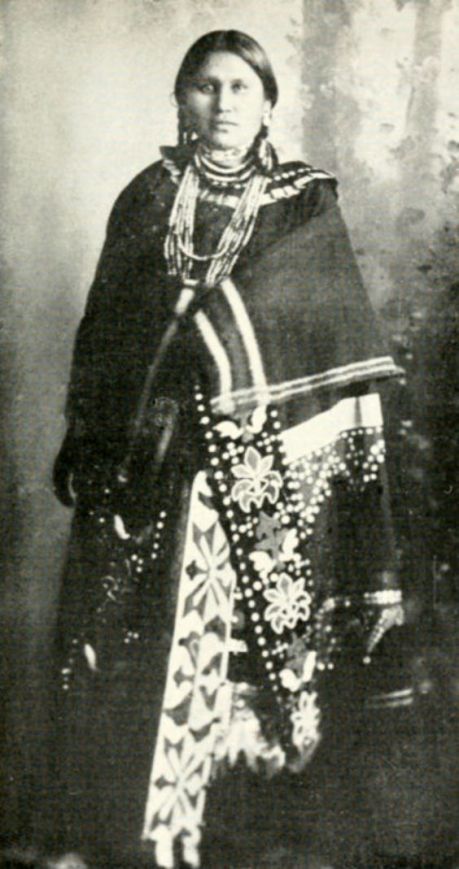
Maliseet woman 1884, no name or location given.
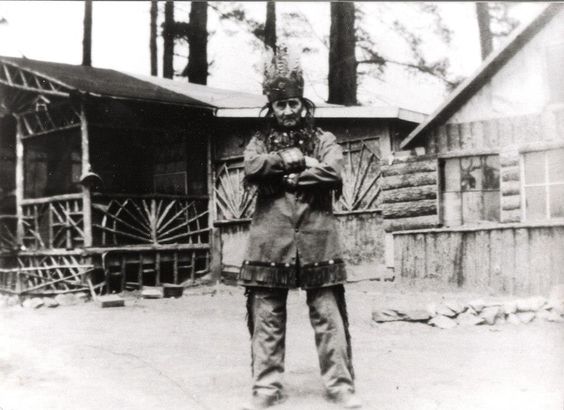
Sockalexis Newell (1874-1952) at his home in Locke Mills, Maine.
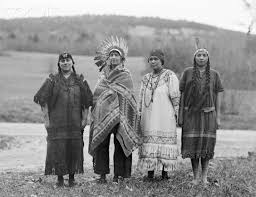 Penobscot girls, no date given.
Penobscot girls, no date given.
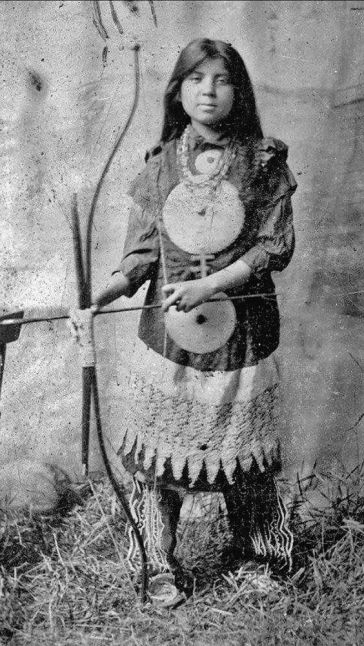 Penobscot girl 1858
Penobscot girl 1858
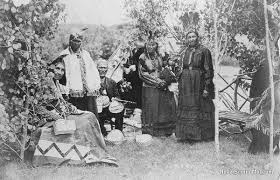
Mi’kmaq group including Madeline Toney (second from the right) near Bear River in Nova Scotia – 1910
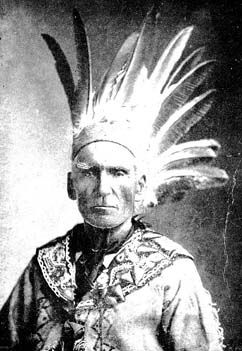 Chief Big Thunder , Maliseet – 1907
Chief Big Thunder , Maliseet – 1907
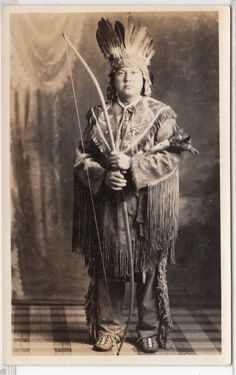 Penobscot , 1937
Penobscot , 1937
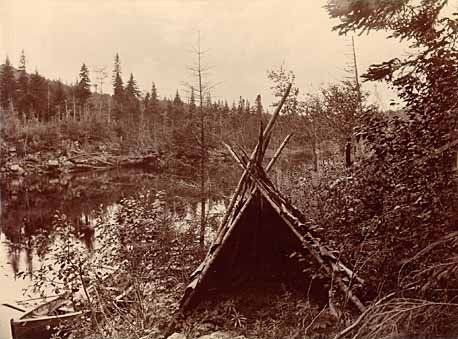
Traditional MikMaq hunting shelter.
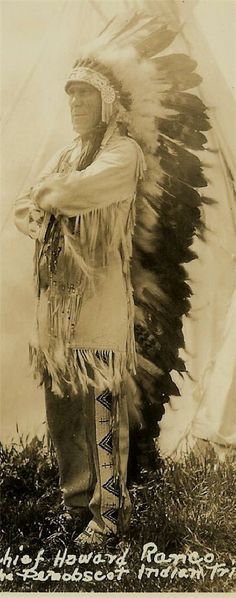 Penobscot Chief Howard Ranco, 1933.
Penobscot Chief Howard Ranco, 1933.
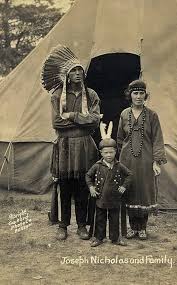 Joseph Nicholas, wife Margaret Bassett Nicholas and child, 1921 Indian Village, Maine – Passamaquoddy
Joseph Nicholas, wife Margaret Bassett Nicholas and child, 1921 Indian Village, Maine – Passamaquoddy
Passamoquoddy group 1910
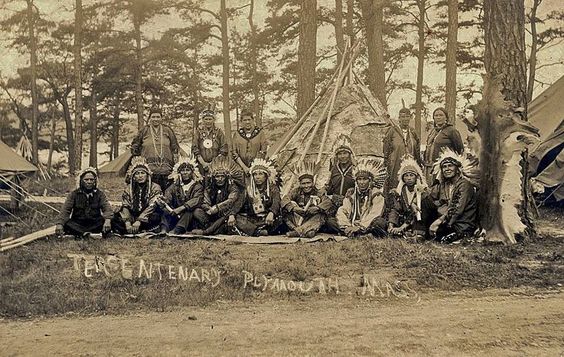
Penobscot and Passamaquoddy group from Old Town, Maine at Plymouth, Massachusetts for the Plymouth Tercentenary Celebrations – 1921
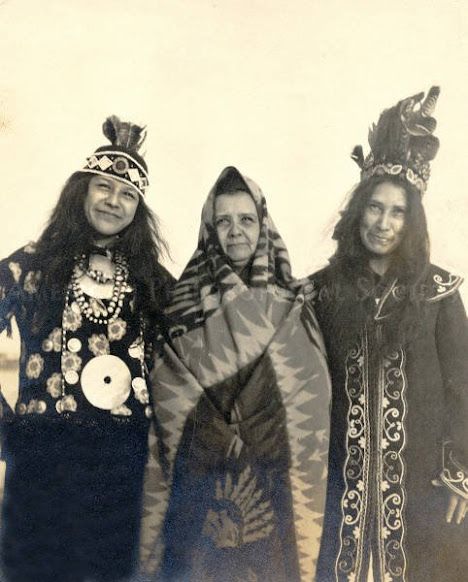
Passamaquoddy women , 1910. No names or location given.
Chief Neptune , Passamaquoddy, 1921.
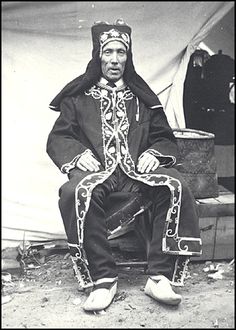
Gabe Paul in beaded costume, September 10, 1913
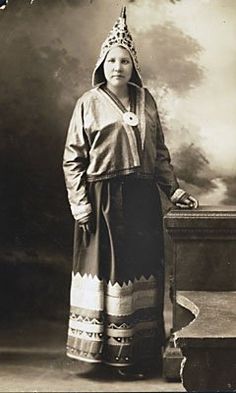
Mi’kmaq woman “Postcard photograph of Elizabeth , daughter of ‘Dr.’ Jeremiah Lonecloud, medicine man of the Micmac tribe.” Added: “This is probably Annie Gloade, Lonecloud’s mistress.
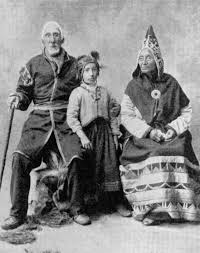 Micmac family photo
Micmac family photo
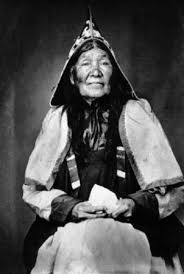
Photograph taken circa 1880, is one of the earliest known photographic images of a member of the Mi’kmaq. Molly Miuse was born about 1810 to Joseph and Nancy (Malagash) Muise. In this photograph she is seen wearing the traditional peaked cap with a double curve design.
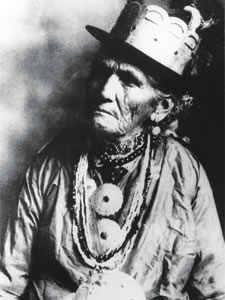
1901 photo of Mary Mitchell-Selmore (aka Big Mary) the wife of Sopiel Selmore – Passamaquoddy
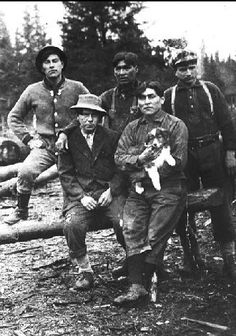
Back row L-R: Edward Tremblay, John Sappier, Unknown Front row L-R: Noel Moulton, Edward Francis – Maliseet – c. 1900
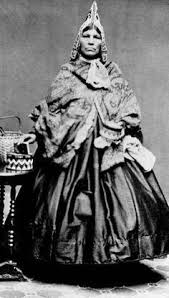 1871 -Christianne Morris (Micmac) was known for her exquisite work in the traditional arts, supporting her family by the sale of quillwork and basketry.
1871 -Christianne Morris (Micmac) was known for her exquisite work in the traditional arts, supporting her family by the sale of quillwork and basketry.
Her needlework, quillwork, splint basketry, and even a full-sized canoe and paddles all won first prizes at various provincial exhibitions. She once sold two beaded costumes to Indian Commissioner William Chearnley for the impressive sum of $300.
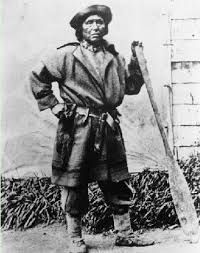 1866-Gabriel Acquin was known by a variety of names; Sachem Gabe and Noel Gabriel being the most verifiable. He was a Maliseet hunter, guide, interpreter and showman.
1866-Gabriel Acquin was known by a variety of names; Sachem Gabe and Noel Gabriel being the most verifiable. He was a Maliseet hunter, guide, interpreter and showman.
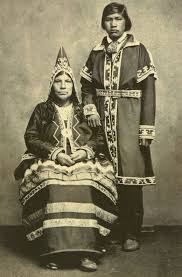
Micmac couple. The name “Micmac” is from the Micmac Mi:’maq, the plural form ofMi:k’mawaj, “one of high ability,” a word derived from Mi”k’amwesu, the name of a legendary forest dweller with supernatural power. At the time of contact, the Micmac occupied what is now eastern New Brunswick, Nova Scotia, Prince Edward Island, and the Gaspé Peninsula of Quebec. In historic times, the Micmac colonized Newfoundland. Micmac also migrated in significant numbers from their Canadian reserves to cities and towns in Ontario, Quebec, Maine, New Hampshire, Massachusetts, Connecticut, New York, and new Jersey; often spending years or decades in these places before returning to the reserves, often to retire.
 1912 Cheif Neptune and wife, Passamaquoddy , Eastport
1912 Cheif Neptune and wife, Passamaquoddy , Eastport
Passamaquoddy Native artist Tomah Joseph created delicate images on birchbark of the natural world. He lived each summer on Campobello Island , where he became close friends with the President Franklin Roosevelt. Through his artwork, Joseph remembered, retold and recorded the traditions of his ancestors.
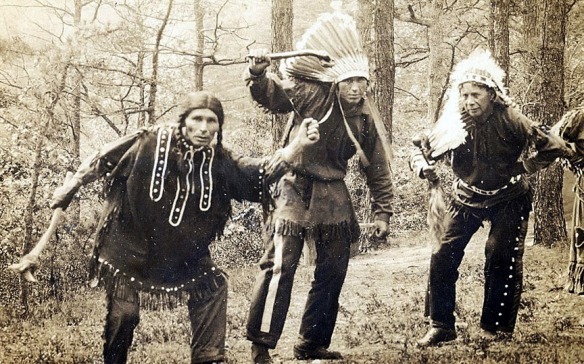 Demonstrating a traditional Passamaquoddy dance in this photo from 1921 are Chief Horace Nicholas (far left), Joseph Nicholas (center), and Joseph Neptune (right).
Demonstrating a traditional Passamaquoddy dance in this photo from 1921 are Chief Horace Nicholas (far left), Joseph Nicholas (center), and Joseph Neptune (right).


The photographs of the beautiful native peoples and their traditional outfits are impressive. I too wonder about their elf hats and why they selected that design for their chapeaus? Maybe it helped in the snow the way a strongly pitched roof permits snowfalls to slide off! Lovely research you are accomplishing into lovely people. This land was their land.
Do you mind if I quote a couple of your articles
as long as I provide credit and sources back to your webpage?
My blog site is in the exact same niche as yours and my visitors
would definitely benefit from a lot of the information you provide here.
Please let me know if this alright with you. Thanks a
lot!
Sorry, i have not checked my email in weeks. Yes no problem. Yes, just please give me credit if you quote me or photo credit if you use any of my images.
Johnnie Ranco is my great grandfather.. Trying to figure out my family heritage.. Fascinated, by my heritage but trying to figure out how I’m related to chief Howard Ranco..I’m thinking he’s my great grandfathers brother.. God wish I could have met them, before my time unfortunately, wishing I grew up on the reservation instead of foster homes.. If anyone sees this and knows the answer, feel free to contact me at jackibeall80@gmail.com
They are my ancestors!
I’m just wondering what us the significant of the enbroided swatika cross on chef Neptune collar ( photo of him in 1921)